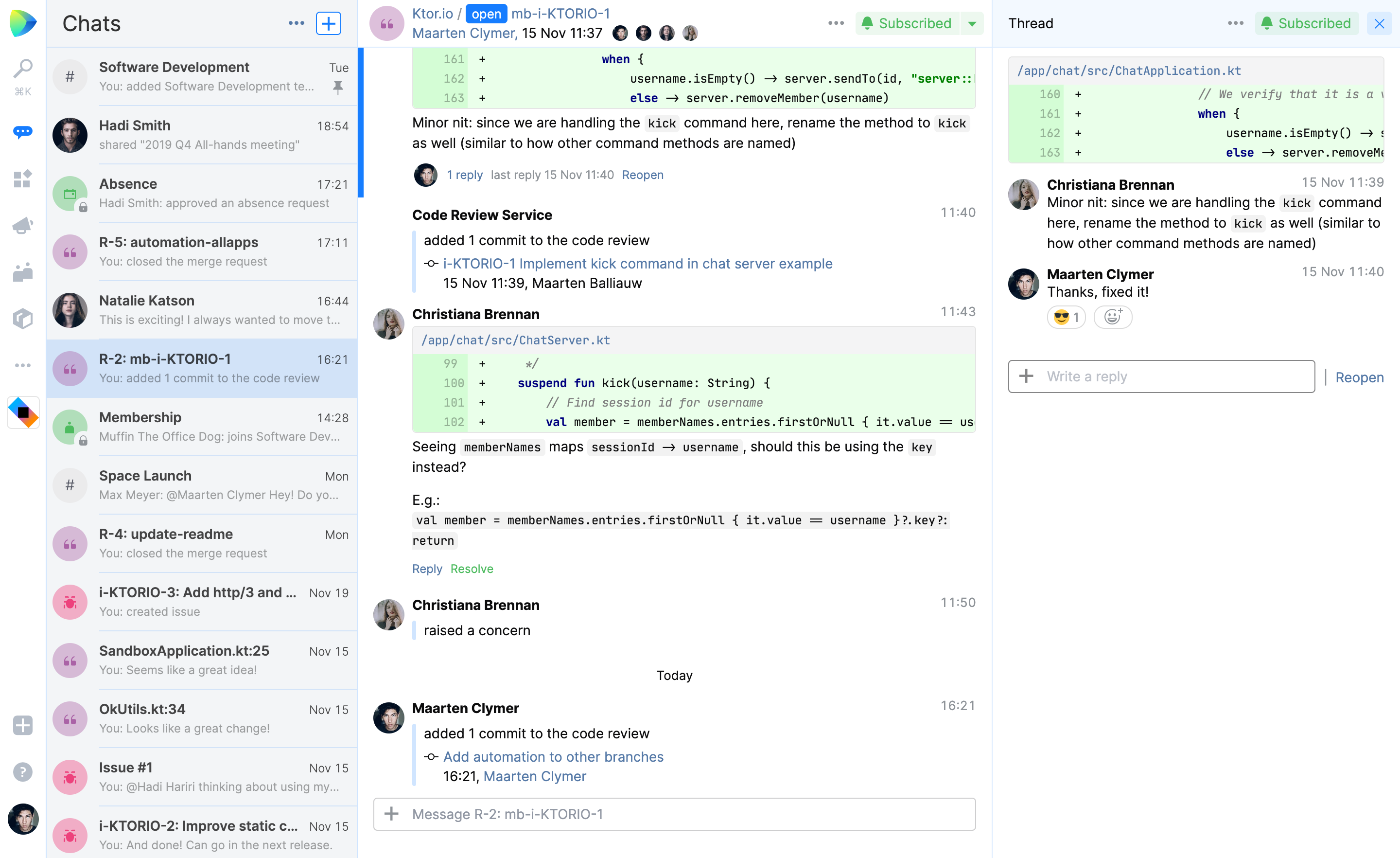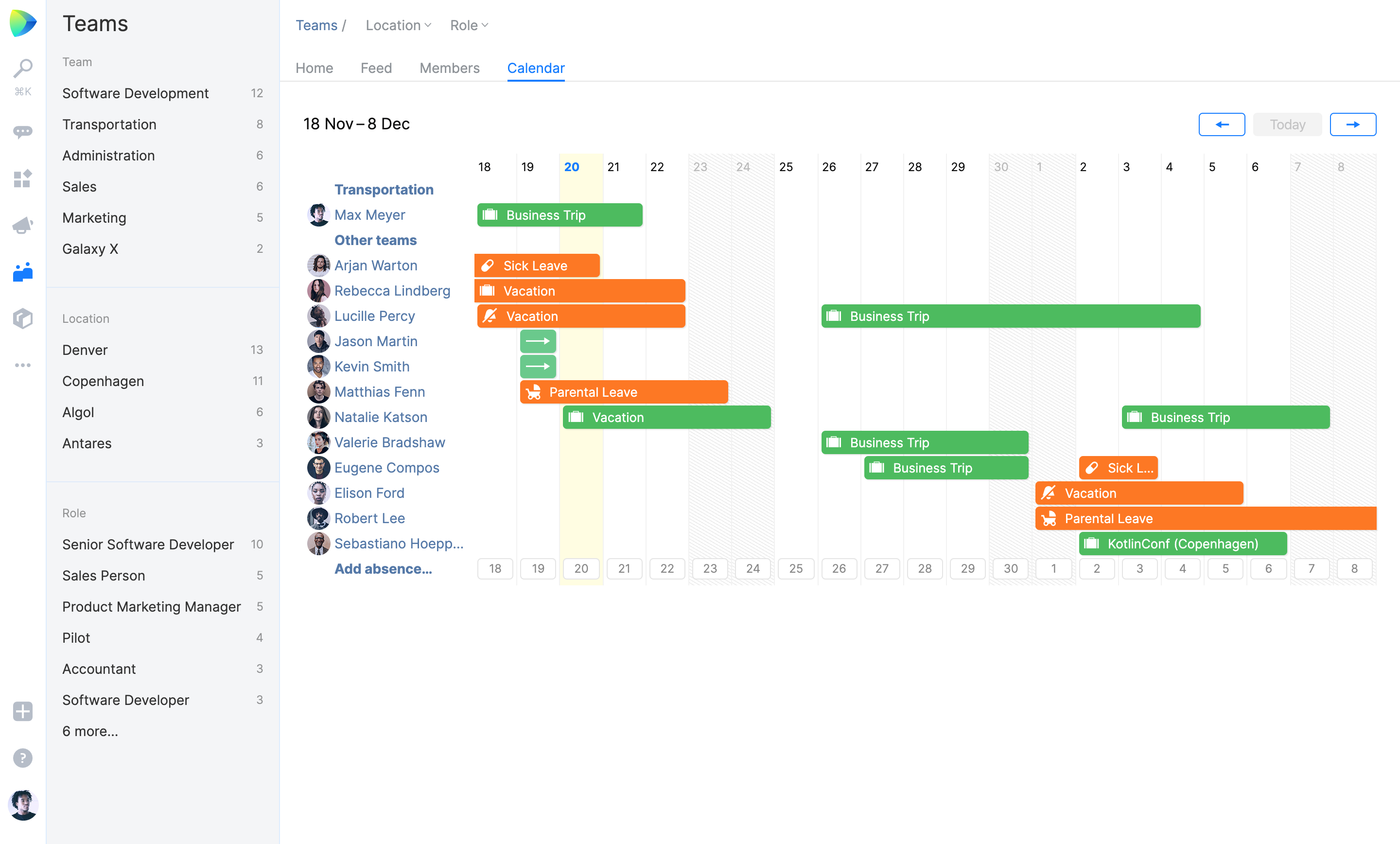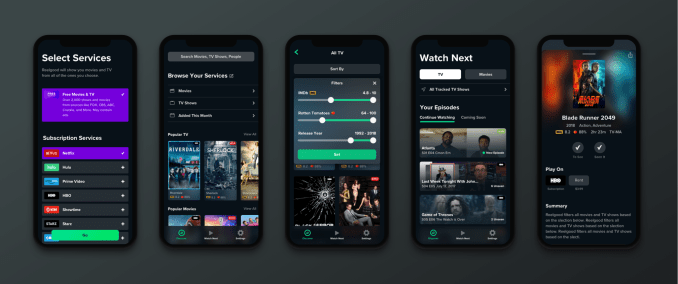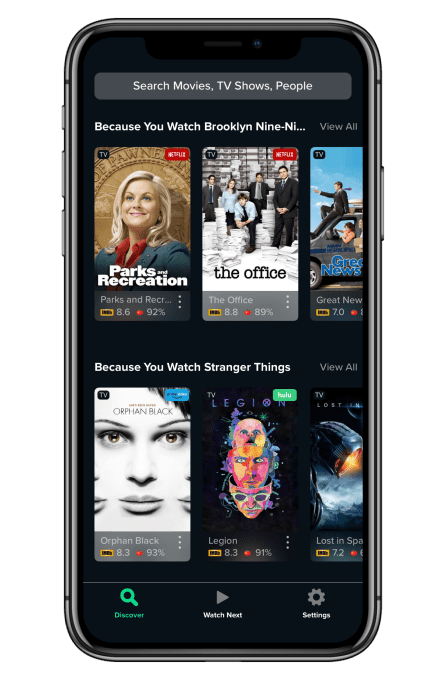Technology
Meatable, the Dutch startup developing cruelty-free technologies for manufacturing cultured meat, is pivoting to pork production as a swine flu epidemic ravages one quarter of the worldpork supply — and has raised $10 million in financing to support its new direction.
When the company unveiled its technology last year, it was one of several companies working on the production of meat derived from animal cells — a method of meat production that theoretically has a far smaller carbon emissions footprint and is better for the environment than traditional animal farming.
At the time, it was one of several companies — including Memphis Meats, Future Meat Technologies, Aleph Farms, HigherSteaks and many, many pursuing technologies — to bring cultured beef to market. Now, as pork prices rise globally, Meatable becomes one of the first companies to publicly shift gears and turn its attention to the other white meat.

Thatnot the only way the company is setting itself apart from its peers in the market. Meatable is also an early claimant to a commercially viable, patented process for manufacturing meat cells without the need to kill an animal as a prerequisite for cell differentiation and growth.
Other companies have relied on fetal bovine serum or Chinese hamster ovaries to stimulate cell division and production, but Meatable says it has developed a process where it can sample tissue from an animal, revert that tissue to a pluripotent stem cell, then culture that cell sample into muscle and fat to produce the pork products that palates around the world crave.
&We know which DNA sequence is responsible for moving an early-stage cell to a muscle cell,& says Meatable chief executive Krijn De Nood.
To pursue its new path, the company has raised $7 million from a slew of angel and institutional investors and a $3 million grant from the European Commission . Angel investors include Taavet Hinrikus, the chief executive and co-founder of TransferWise, and Albert Wenger, a managing partner at the New York-based venture firm Union Square Ventures.
MeatableDe Nood says that the new cash will be used to accelerate the development of its prototype. The small-scale bioreactor the company had initially targeted for development in 2021 will now be ready by 2020 and the company is hoping to have an industry-scale plant online manufacturing thousands of kilograms of meat by 2025, according to De Nood.
Industrial farming is responsible for between 14% and 18% of the greenhouse gas emissions linked to global climate change and Meatable argues that cultured (lab-grown) meat has the potential to use 96% less water and 99% less land than industrial farming. Powering facilities using renewable energy could further reduce emissions associated with meat production, according to Meatable.
- Details
- Category: Technology
While file sharing, time tracking, email integration, Gantt charts and budget management are usually some of the most requested features in the average project management platform, we still have a proliferation of tools taking a multiplicity of approaches to the problem of just managing something.
Most people in tech are by now familiar with Slack, Asana, Notion, Trello, Azure DevOps, GitLab and GitHub. But the sector is still booming. Last month, Microsoft Teams had more than 20 million active users, up from 13 million in July. Slack reported more than 10 million daily active users in the second quarter. Adobe just launched a collaboration tool, Notion is super hot, Frame.io raised $50 million and Microsoft has Fluid. Even WordPress is getting in on the act.
(When is someone going to make something for journalists? Oh, we&re poor. I forgot).
And yet. And yet… project management for developers remains a rising area for startups.
Now a new product has been launched to address this space. And how ironic is it thatcalled Space?
Space is billed as an integrated team environment that provides a toolset that combines into a single platform messaging, team and project management, internal blogs, meeting scheduling and software development processes.
Itnow available for early users, who will get an Organization plan free of charge. This includes 25 GB storage per user, a monthly limit of 10,000 CI credits and 125 GB data transfer per user.
With Space, all the data a team needs to work is stored in one place, while software development tools (source code management, code review and browsing, continuous integration, delivery and deployment, package repositories, issue tracking, planning tools and project documentation) are integrated with communication and identity support.

The idea is that any workflow can be automated, from onboarding new employees to configuring rules for merging requests to CI/CD pipelines. You also can schedule meetings, projects, tasks, commits, code reviews, etc.
Space is a bootstrapped spin-out from JetBrains, the company behind Kotlin, a semi-official language of Android. While Java is the official language of Android development, it has a steep learning curve. When JetBrains created Kotlin, it was so successful that it became a secondary &official& Java language. So, in theory, they ought to know their stuff.
JetBrains CEO Maxim Shafirov says &Most digital collaboration environments are in fact a mixed bag of solutions tackling different problems, from development tools to task management ones. This leaves people switching tools and tabs, manually copying information, and generally losing time and creative flow. JetBrains Space is changing this — and thus changing the foundation of creative work, software development included.&
JetBrains Space is available through a subscription model with a freemium starting tier, while the paid plans start at $8 per active user per month. The ultimate goal for Space is to provide a unified company-wide platform expanded to a wider range of creative teams, including designers, marketers, sales, accounting and more.
Time will tell if Space takes off (LOL) and can start to put the heat on products like Slack. As a Slack hater, I do hope so.

- Details
- Category: Technology
Read more: Move over Slack — Space is a new project management platform for developers
Write comment (99 Comments)The world isn&t ready for the digital nomad movement.
If projections are to be believed, the growing trend in how people choose to live and work is fast outpacing the service and policy enhancements needed to keep up with a borderless workforce bound only by its need for a reliable Wi-Fi connection. But thatnot slowing down the nomads.
The Economist theorizes that there could be as many as one billion remote workers by 2035. Such a movement has implications for entities ranging from banks and insurance companies to national governments — but few organizations are in the habit of looking 15 years down the road and altering course appropriately. But even short-term, the numbers deserve our attention: about 59 million people are considering joining the digital nomad movement in the next two to three years.
Put another way: in the next 24 to 36 months, roughly the population of Italy plans to sever traditional workplace ties so they can go mobile. How are our global services and infrastructures going to accommodate these individuals?
Having spent more than six years as a digital nomad myself, I can tell you that therea steep learning curve to this lifestyle. While itone that I&ve found well worth the effort, tapping into the networks and services needed to sustain my professional and personal networks hasn&t always been easy. Looking back to when I first gave into my wanderlust, after starting my career in the late ‘90s dot-com era as a serial entrepreneur in the U.S. digital marketing and ad tech industries, I can&t help but muse that I wish I knew then what I know now.
So for all of those aspiring or early stage nomads out there, in hopes that your own transitions to the nomadic lifestyle might be easier than my own, I&m here to tell you what I know now. While we can expect to see a great deal of change over the next couple decades, as the world economy races to catch up to the digital nomad movement, these are the essential considerations — and your best options — when it comes to the core elements needed to sustain yourself in your nomadic ramblings today.
Accommodations
Letstart with the basics: where to live.
Italmost impossible for digital nomads to find suitable accommodations at fair prices within major U.S. metropolitan areas that foster the standard of living they&re seeking. Thatone of the main reasons why so many nomads are ending up in Asian countries and other economical international destinations. In addition to being lower-cost, these destinations offer desirable alternatives to city environments where the standard 9-5 is required to afford everything the city has to offer.
When it comes to finding a place to live, whether for a few days or many months, there are a lot of options. The one that makes the most sense has a lot to do with your individual situation and preferences. Most important is having a place to stay with strong Wi-Fi. Consider:
Airbnb: Given its popularity for vacation rentals, a lot of new nomads initially turn here. While it allows for a more &at home& feel in a rental (because it is someonehome), it can quickly become cost-prohibitive. Airbnb is great for short-term rentals, but comparatively expensive for anything more than a couple weeks.
Booking and Agoda: Similar to Airbnb, but these sites are more professional in that they&re mostly used by professionally-run apartments, hotels and resorts. All are great for those who are looking for more services with their accommodations. But they don&t always have the home-like feel that many nomads crave, and like Airbnb, they can get expensive fast.
Facebook Groups: A number of Facebook Groups for digital nomads have emerged recently. These groups can be handy because they let guests and hosts connect directly and come to mutually agreeable arrangements. However, these groups aren&t a rental platform. Guests don&t have access to reviews or an easy way to issue payments confidently. So while accommodations can be a bit more affordable when organized through groups, ithard to know what you&re going to get.
Hostels: As any rambling college student can attest, hostels are an affordable, social way to see the world. But living at a hostel offers little privacy and near-constant disruption, often of the drunken partying variety. Itnot a terribly viable route for nomadic couples or anyone looking for living space that can also double as an office.
Hotels: On the flip side, hotels are great for couples. But for nomads spending weeks or even months abroad, they&re expensive and can be isolating for people looking to truly immerse themselves in new local cultures. Hotels are best reserved for short-term expeditions.
VIP hostels (e.g., Selina): This new breed of the hostel experience offers a great combination of co-working and social connections that help nomads connect with like-minded people. They provide some level of privacy, but these accommodations — like others — become expensive in the long term if you want your own bedroom.
Co-living spaces: As with co-working spaces, therea growing movement in which digital nomads come together to share the cost of living accommodations, which range from multi-bedroom apartments to large-scale co-living buildings complete with kitchens, shared and private bathrooms, working and community spaces. These environments are great for making connections while having access to privacy when needed, but branded co-living spaces will still cost more than a local midterm apartment.
Midterm rental platforms: For nomads looking to stay in one place for a month or more and truly soak in the culture, midterm rental platforms represent a more-affordable alternative to platforms like Airbnb. These platforms (full disclosure: I now operate one of them, by the name of NomadX) offer affordable month-to-month options with fast Wi-Fi in everyday neighborhoods, which enables you to connect more deeply with the local community without an overly long commitment. That said, this category is still quite new, so midterm rental inventory might be limited or nonexistent in the market you&re considering.
Couchsurfing: Finally, I&d be remiss not to mention Couchsurfing, a social network for travelers and nomads that makes it possible to connect directly with locals and even crash on their sofas for free. That said, Couchsurfing is only designed for short-term stays, itnot very professional and itquickly evolving into more of a dating/hook-up platform than anything else.
Also, a quick note on Wi-Fi: No matter where you stay, you&ll need to ensure you can always be connected in order to stay on top of work. While you can check with your current mobile provider on international roaming plans, the coverage might be limited and ultimately become expensive. You might instead want to consider buying a local SIM card in every country and using it with your smartphone. That way, you can use your phone as a hotspot and get internet on your laptop. In a pinch, though, itgood to have a backup mobile hotspot option. (For example, I travel with a Skyroam Solis.)
Insurance
We digital nomads are risk takers by nature, but that doesn&t mean we don&t want or appreciate a safety net. After all, having an accident isn&t a choice. Unfortunately, if nomads can&t get coverage for a fair price, many opt to forego insurance altogether and end up resorting to crowdfunding if they end up in a bad situation. I&ve had several friends get into accidents in foreign countries, and they couldn&t get proper medical treatment until they&d crowdfunded the needed resources. This is a worst-case scenario, and itone that I hope becomes a thing of the past as more borderless options for insurance emerge.
- Details
- Category: Technology
Read more: Essential tools for today’s digital nomad
Write comment (94 Comments)
Canva, the design company with nearly $250 million in funding, has today announced a variety of new features, including a video editing tool.
The company has also announced Canva Apps, which allows developers and customers alike to build on top of Canva. Thus far, Dropbox, Google Drive, PhotoMosh and Instagram are already in the Canva Apps suite, with a total of 30 apps available at launch.
The video editing tool allows for easy editing with no previous experience required, and also offers video templates, access to a stock content library with videos, music, etc. and easy-to-use animation tools.
Meanwhile, Canva is taking the approach of winning customers when they&re young, with the launch of Canva for Education. Ita totally free product that has launched in beta with Australian schools, integrating with GSuite and Google Classroom to allow students to build out projects, and teachers to mark them up and review them.
Canva has also announced the launch of Canva for Desktop.
As design becomes more important to the way every organization functions and operates, one of the only barriers to the growth of the category is the pace at which new designers can emerge and enter the workforce.
Canva has positioned itself as the non-designerdesign tool, making it easy to create something beautiful with little to no design experience. The launch of the video editing tool and Canva for Education strengthen that stance, not only creating more users for the platform itself but fostering an environment for the maturation of new designers to join the ecosystem as a whole.
Alongside the announcement, Canva CEO Melanie Perkins has announced that Canva will join the 1% pledge, dedicating 1% of equity, profit, time and resources to making the world a better place.
Herewhat she had to say about it, in a prepared statement:
Companies have a huge role to play in helping to shape the world we live in and we feel like the 1% Pledge is an incredible program which will help us to use our companytime, resources, product and equity to do just that. We believe the old adage ‘do no evil& is no longer enough today and hope to live up to our value to ‘Be a Force for Good&.
Interestingly, Canvaposition at the top of the design funnel hasn&t slowed growth. Indeed, Canva recently launched Canva for Enterprise to let all the folks in the organization outside of the design department step up to bat and create their own decks, presentations, materials, etc., all within the parameterof the design system and brand aesthetic.
A billion designs have been created on Canva in 2019, with 2 billion designs created since the launch of the platform.
- Details
- Category: Technology
Read more: Canva introduces video editing, has big plans for 2020
Write comment (96 Comments)Hello and welcome back toEquity, TechCrunchventure capital-focused podcast, where we unpack the numbers behind the headlines.
This week was a bit different than usual. First, we managed to come close to our old time target (20 minutes) instead of our regular length (30 minutes). And, second, Alex is coming back to TechCrunch starting next week!
Expect more Equity and, from Alex, writing for Extra Crunch. But don&t worry, we&ve got you covered. If you aren&t an Extra Crunch subscriber yet you can use the code &EQUITY& and save a bundle. (Woo!)
That done, letdig into the news that Kate and Alex discussed, starting with Harlem Capital$40.3 million new fund.The New York-based outfit has a focus on investing in minority entrepreneurs, who receive significantly less than their white male counterparts. This is one of the largest funds with a diversity mandate to date, and thatsomething to be stoked about.
Next we turned to Mike Cagney&s canny fundraising ability. The former SoFi CEO, ousted for bad behavior, is putting together another huge funding round for his startup, Figure Technologies. The expected $103 million round comes after the company raised $120 million before.
With more than $50 million raised of the more than $100 million it expects, covering Figure is partially a financial story. However, due to Cagneypart in the project, italso a story of how fast money forgives.
Pivoting to Europe, Kate and Alex chewed into the latest report on European venture capital, pulling from Atomico and Forbes. The headlines are pretty simple: There are more EU-based unicorns than ever, more money invested in the region and the money is mostly finding male hands.
Disappointing diversity metrics aside, itan encouraging set of metrics for a region that has long found itself left to the side when major startup markets are discussed.
And finally, Alex wanted to talk about two impending U.S.-listed technology IPOs. Coming in the wake of the WeWork fiasco and sporting similar share prices but divergent growth profiles, the debuts of Bill.com and Sprout Social are events.
Equity drops every Friday at 6:00 am PT, so subscribe to us on Apple Podcasts, Overcast, Spotify and all the casts.
- Details
- Category: Technology
Read more: Closing the race and gender funding gap
Write comment (97 Comments)Streaming aggregator Reelgood capitalized on the overabundance of streaming services available today by offering consumers a universal dashboard where you can track what you&re watching and discover your next binge. It then translated the activity from its over 10 million users into data it licenses to major companies, including Roku, Microsoft, smart TV makers, NYPost and even hedge funds. Now the company has closed on $6.75 million in Series A funding to continue to grow its business.
The round was led by Runa Capital and includes participation from Reelgood seed round investor, August Capital. To date, Reelgood has raised $11 million.
The companyapp to some extent competes with those designed to help you keep track of the episodes you&ve watched across streaming services and TV, like TV Time, iTV, JustWatch and others. But Reelgoodservice stands out for its breadth of catalog — it tracks both movies and TV across some 336 streaming services, the website says. This includes free services like Tubi, Crackle and those from TV networks, plus authenticated &TV Everywhere& services for pay-TV subscribers, and subscription services like Netflix, Hulu, HBO, Amazon Prime and others. It also can help you compare prices on rental options.
And its robust search and filtering features can help you find titles that are new, coming or leaving services, or by any other filter — like genre, year, Rotten Tomatoes rating, IMDB score and more. The more you use and personalize the service, the better its suggestions for what to watch next then become.
Once you find something to watch, you just press play to launch the streaming serviceapp or website.

The work involved in making a simple concept — a universal dashboard for streaming — is fairly complex, Reelgood says.
&Putting together these streaming service libraries involves ingesting massive and unstructured amounts of data from hundreds of different sources for real-time matching and combination using machine learning and human curators,& noted Reelgoodhead of Data, Pablo Lucio Paredes.
Reelgood also touts the quality of its data (averaging 98% across all 300+ services), which it then licenses to publishers, search engines, media players, TVs, voice assistants and other smart devices. Currently, the company has around 50 business customers who pay either for the raw data, the insights or both.
 Roku, for example, uses Reelgooddata for its own universal search feature. NYPost displays streaming availability data on their articles via a widget. Hedge funds look at the data to better understand consumer behavior in streaming services and the movement of content between catalogs.
Roku, for example, uses Reelgooddata for its own universal search feature. NYPost displays streaming availability data on their articles via a widget. Hedge funds look at the data to better understand consumer behavior in streaming services and the movement of content between catalogs.
This year, Reelgood hired Nielsenformer SVP of global measurement, Mark Green, to lead its B2B data licensing business, called Reelgood Insights.
&I sought out and joined Reelgood because they are poised to capture the billions in revenue spent on viewership data as viewing continues to shift towards OTT,& said Green.
The additional funding will be used to expand the number of platforms where Reelgood is offered, including on a range of smart TVs through partnerships. The company has signed five smart TV deals with major brands that will begin to roll out in 2020, but LG is the only name Reelgood can currently disclose.
Reelgood is headquartered in San Francisco. It has 18 employees, both local and remote, and is hiring across a number of roles.
- Details
- Category: Technology
Read more: Reelgood raises $6.75 million for its universal streaming guide
Write comment (95 Comments)Page 178 of 5614

 8
8